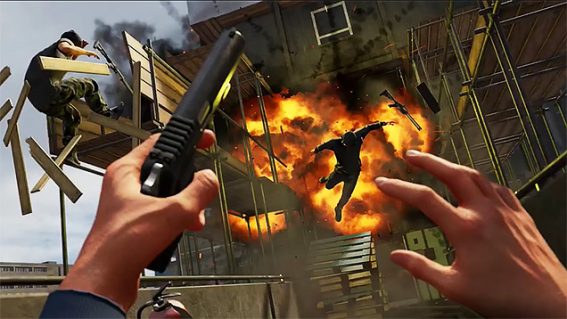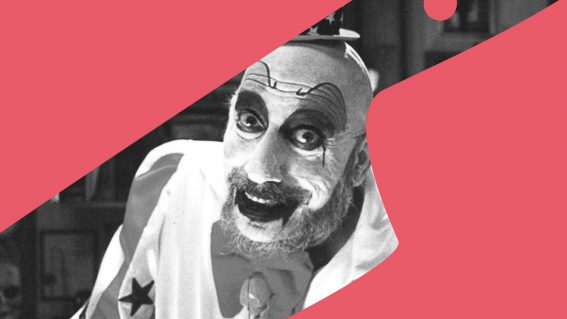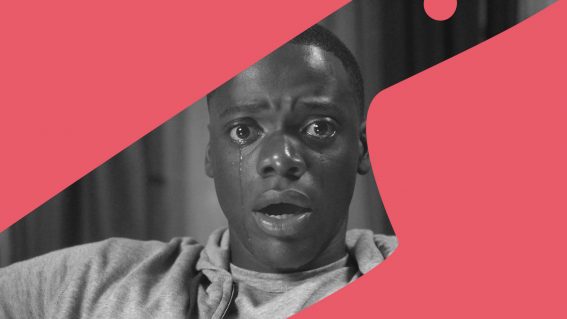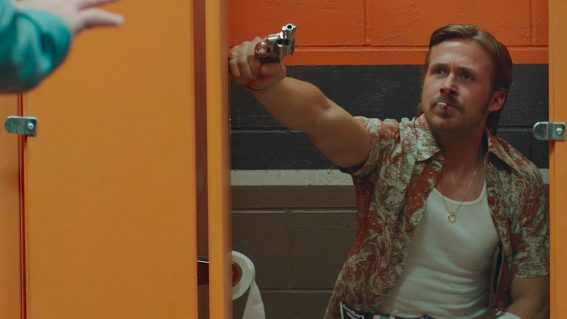Is Groundhog Day: Like Father Like Son one of the strangest sequels ever?

Didn’t know there was a sequel to Groundhog Day? There is, and it’s pretty weird. Critic Luke Buckmaster explores the VR experience Groundhog Day: Like Father Like Son.
Repetition is key to the narrative of Groundhog Day, for reasons immediately obvious to anybody who’s seen Harold Ramis’ classic 1993 comedy. Bill Murray’s protagonist Phil Connors, a smug and condescending weatherman, is caught up in a cruel cosmic prank in the small town of Punxsutawney, where he is forced to live the same day over and over again, freed only after the Dickensian revelation that his life is best spent helping others.
While this experience is intensely repetitive for Connors, it provides constantly fresh material for the audience, who watch this gradually endearing sod of a man apply different variables to the same situations in order to create new outcomes. So: repetitious for him but very entertaining for us, with what could be (according to an estimate from Ramis) 30-40 years in the time loop, condensed into two hours of comedy.
But what if we shared with Connor the curse of repetition? That feeling of being trapped and needing to perform the same actions again and again, before we can move on?
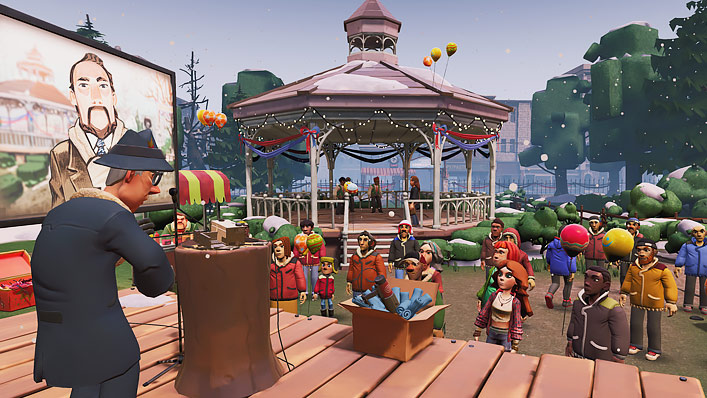
This is core to the premise of Groundhog Day’s very strange and barely known sequel, Groundhog Day: Like Father Like Son, a VR experience released late last year on PS4 VR, Oculus Rift and Vive. It’s not some two-bit knockoff or work of fan fiction. Rather a production backed by Sony Pictures VR and developed by Tequila Works, a studio that’s experimented with time-related concepts before—including in the compelling VR experience The Invisible Hours, an Agatha Christie-esque whodunit billed as a variety of immersive theatre, the viewer a passive onlooker with the ability to rewind or fast forward at any time.
We become Phil Connors Jr.
In Like Father Like Son, we inhabit the body of Phil Connors Jr., a 20-something social media influencer and vlogger who is egocentric and sarcastic like his old man—who has recently passed away. Phil Jr. managed to escape Punxsutawney but is back in town for a special ceremony to commemorate his father. The people organising the ceremony are Phil Jr’s mother Rita (played by Andie MacDowell in the movie) and Ned ‘Needle Nose’ Ryerson (Stephen Tobolowsky in the movie), These two—notably older—characters have been reincarnated in the sequel’s cuddly-looking glossy aesthetic.
Early in the piece we wake up in Phil Jr’s old bedroom (“this room is just how I left it: gross and depressing,” he says) to the tune of an old alarm clock just like the one in the film, belting out the song that became earworm horror for Murray’s character: Sonny and Cher’s I Got You Babe. You can switch the alarm clock off or chuck it across the room (guess which is more satisfying?). Ryerson boulders up to you every day outside the diner, near the spot where Phil Snr routinely stepped into the pothole. That hole has been filled, with Phil’s name etched into the cement: one of several affectionate visual references to the original.
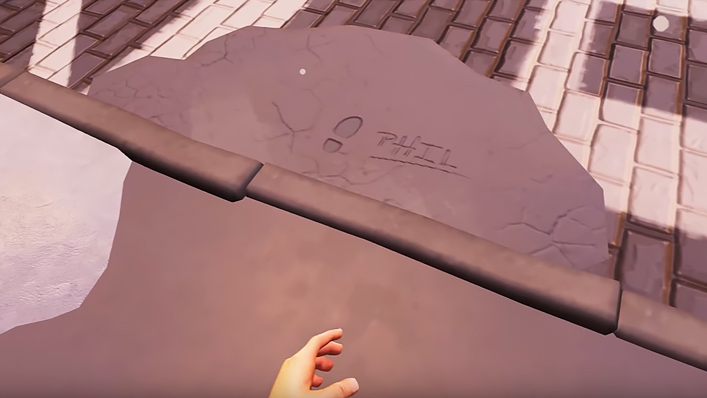
When Phil Jr. realises he’s stuck in a time warp, he quickly realises that in order to restore the space/time continuum he must help people out. This involves simple things, like figuring out how to make breakfast for your niece or repairing the coffee machine so your brother can have a cappuccino, which takes several ‘days’ to figure out. To impress Ned’s grandson, in order for him to listen to your advice about his no-good friends, you have to impress him with your mad spray painting abilities. I spent around 45 minutes whipping up a couple of pieces, involving a form of colouring inside lines with a virtual spray can.
Gimmicky activities can be interesting with good writing
Several basic activities in the game (such as throwing scrunched up paper into a mini basketball ring) are boilerplate VR—gimmicky interactions we’ve seen many times before. As the 2016 VR classic Job Simulator demonstrated, however, conceptually uninteresting activities such as pulling levels and pressing buttons can be part of a richer fabric if the writing imbues the environment with narrative flair.
In Job Simulator that came from witty commentary delivered by cheeky robots satirizing contemporary workplaces. In Like Father Like Son, well-written dialogue slowly builds empathy for the characters; a few hours into playing I was surprised to realise I genuinely cared for these people. The moral of the game also carries a cute message about relating to others on their own terms.
Navigation is severely limited: teleport only, a semi-transparent outline of your figure indicating spots where there’s something to do or someone to interact with. During dialogue exchanges you choose a conversational path by selecting between chunks of text on screen. These boxed-in functions allow for a heavily authored experience that at times feels oppressive—structurally not all that more developed than the branches of a Choose Your Own Adventure book.
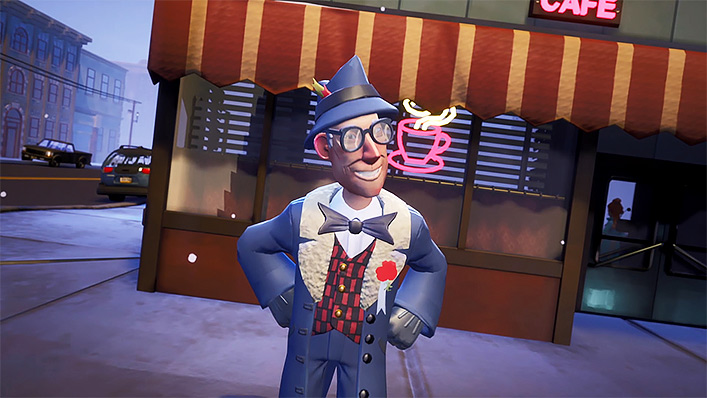
Current VR is as much about restriction as it is freedom
While the current era of VR was sold on the hyperbolic claim that it enables users to “go anywhere and do anything”, quite the opposite is true: character-based story experiences are rigidly fixed and predetermined. A sense of narrative restriction is as powerful as any feeling of visual liberation afforded by virtual embodiment and headtracking technology. Part of the trick is to manage expectations, protecting the experience from the disruption of what academic Mel Slater calls the ‘Plausibility Illusion’—which is broken when an action performed by the user does not generate the expected response from the virtual world.
Or, better yet, the trick can be to implement a restriction and make it feel like a freedom. In the outstanding The Under Presents, for instance—another VR production taking cues from immersive theatre, with a surreal, Lynchian, high art atmosphere—you can hang out with other players in a communal space: a very cool, decrepit looking nightclub. The players cannot communicate verbally in this world; the peculiar, cloaked characters we inhabit do not have the gift of speech. Rather than leading to frustration, this encourages people to find creative ways to communicate using body and hand gestures—implementing a wide variety of communicative possibilities that feel genuine to this world.
Content creators are only starting to get their heads around these sorts of issues, as the language and syntax of the medium slowly develops. Like Groundhog Day—both the film and, especially, its VR sequel—the road forward will no doubt involve a lot of repetition. Once we’re freed from the time warp, anything is possible.

